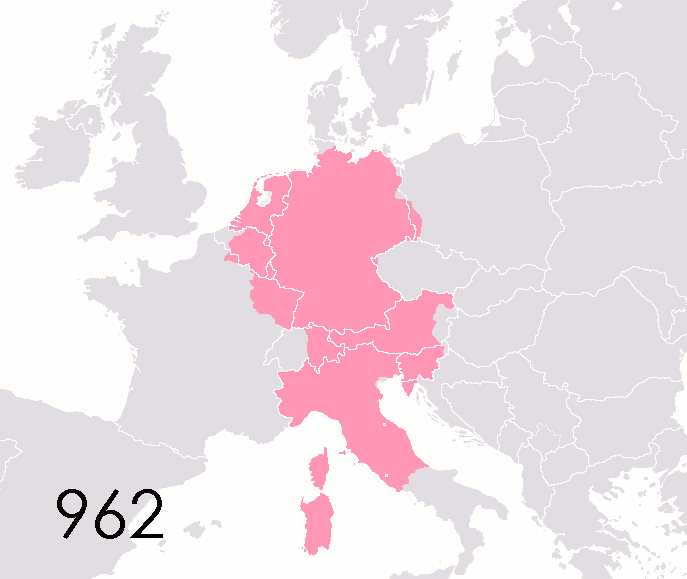|
Sayn-Wittgenstein-Hachenburg
Sayn-Wittgenstein-Hachenburg (sometimes called Sayn-Hachenburg) was a German County located in Rhineland-Palatinate, near the river Sieg. When Count William III of Sayn-Wittgenstein-Sayn died in 1623 without clear heirs, the Archbishop of Cologne occupied the vacant County until the succession was settled. It was settled by treaty in 1648, when the county was given jointly to Countesses Ernestine and Johanetta, two sisters who were granddaughters of Count William, and their mother Dowager Countess Louise Juliane made regent. But shortly after the treaty, the county was split between the two. Ernestine's portion was called "Sayn-Wittgenstein-Hachenburg". Johanetta's was "Sayn-Wittgenstein-Sayn-Altenkirchen Sayn-Wittgenstein-Sayn-Altenkirchen (sometimes called Sayn-Altenkirchen) was a German county located in what is now Rhineland-Palatinate, near the river Sieg. When Count William III of Sayn-Wittgenstein-Sayn died in 1623 without clear heirs, t ..." (or Sayn-Altenkirchen ... [...More Info...] [...Related Items...] OR: [Wikipedia] [Google] [Baidu] |
Ernestine Of Sayn-Wittgenstein
Ernestine of Sayn-Wittgenstein (''Ernestine Salentine''; 23 April 1626 – 13 October 1661), was a German ruler, Sovereign Countess of Sayn-Wittgenstein-Hachenburg in 1648-1661. She was also Countess consort of Manderscheid-Blankenheim by marriage to . Life Born in Hachenburg, she was the eldest child of Ernest, Count of Sayn-Wittgenstein-Sayn and Countess Louise Juliane of Erbach. She was probably named after her father. In his will, Count Ernest left his domains to his only son Louis, under the regency of his mother Louise Juliane during his minority. In case he would die prematurely, his two surviving daughters (Ernestine and Johannetta) would inherited the County. Succession When Count Louis died four years later (16 July 1636), the male line of Sayn-Wittgenstein-Sayn died out. A violent dispute over his inheritance erupted between the Dowager Countess and the three half-brothers of her late husband (sons of Count William III and his second wife Anna Ottilie of Nassau-Wei ... [...More Info...] [...Related Items...] OR: [Wikipedia] [Google] [Baidu] |
Sayn-Wittgenstein-Sayn
Sayn-Wittgenstein-Sayn was a county of Rhineland-Palatinate, Germany, comprising the lands of the region of Sayn. It was created as a partition of Sayn-Wittgenstein in 1607, although it was not until the next year that it obtained fully the Countship of Sayn. The succession was never clear, leading to the annexation of the county in 1623 by the Archbishop of Cologne. It was not until a treaty in 1648 (at the end of the Thirty Years' War) that it was decided the county would pass to the sisters Ernestine and Johanette of Sayn-Wittgenstein-Sayn, under the regency of their mother Countess Louise Juliane von Erbach (1603–1670). They partitioned the county into Sayn-Wittgenstein-Sayn-Altenkirchen and Sayn-Wittgenstein-Hachenburg soon after. Count of Sayn-Wittgenstein-Sayn, First Creation * William III (ruled from 1607–1623), third son of Count Ludwig von Sayn-Wittgenstein; married Anna Elisabeth von Sayn, the niece and heiress of Henry IV, Count of Sayn-Sayn. Counts of ... [...More Info...] [...Related Items...] OR: [Wikipedia] [Google] [Baidu] |
Johannetta, Countess Of Sayn-Altenkirchen
Johannetta, Countess of Sayn-Wittgenstein-Sayn-Altenkirchen (27 August 1632 – 28 September 1701), was Sovereign Countess of Sayn-Wittgenstein-Sayn-Altenkirchen from 1648 to 1701. She was also Landgravine of Hesse-Braubach by marriage to John, Landgrave of Hesse-Braubach, and Duchess of Saxe-Marksuhl (later Saxe-Eisenach) by marriage to John George I, Duke of Saxe-Eisenach. Life Born in Wittgenstein, she was the sixth and youngest child of Ernest, Count of Sayn-Wittgenstein-Sayn and Countess Louise Juliane of Erbach. She was born three months after her father's death, on 22 May 1632. She was probably named after her paternal aunt Johannetta of Sayn-Wittgenstein-Sayn, by marriage Countess of Erbach-Erbach. Succession In his will, Count Ernest left his domains to his only son Louis, under the regency of his mother Louise Juliane during his minority. In case he would die prematurely, his two surviving daughters ( Ernestine Salentine and Johannetta) would inherited the County. ... [...More Info...] [...Related Items...] OR: [Wikipedia] [Google] [Baidu] |
Sayn-Wittgenstein-Sayn-Altenkirchen
Sayn-Wittgenstein-Sayn-Altenkirchen (sometimes called Sayn-Altenkirchen) was a German county located in what is now Rhineland-Palatinate, near the river Sieg. When Count William III of Sayn-Wittgenstein-Sayn died in 1623 without clear heirs, the Archbishop of Cologne occupied the vacant County until the succession was settled. It was settled by treaty in 1648, when the County was given jointly to Princesses Ernestine and Johanette, two sisters who were granddaughters of Count William, and their mother Dowager Countess Louise Juliane made regent. But shortly after the treaty, the County was split between the two. Ernestine's portion was called Sayn-Wittgenstein-Hachenburg (or Sayn-Hachenburg for short), a title which descended through the female line and is now a title of the Grand Duke of Luxembourg. Johanette's was Sayn-Wittgenstein-Sayn-Altenkirchen. Their mother remained regent for both Counties until 1652, when Johanette and Ernestine separately ruled their respective Coun ... [...More Info...] [...Related Items...] OR: [Wikipedia] [Google] [Baidu] |
Burgravine Louise Isabelle Of Kirchberg
, title = Princess consort of Nassau-Weilburg , image = Louisa Isabella Alexandrina Augusta von Kirchberg (1772-1827). Echtgenote van Frederik Willem, vorst van Nassau-Weilburg, en schoonzuster van Augusta Maria Carolina van Nassau-Weilburg Rijksmuseum SK-A-416.jpeg , caption = , reign = , reign-type = , coronation = , predecessor = , successor = , succession = , spouse =Frederick William, Prince of Nassau-Weilburg , issue = William, Duke of NassauPrincess Auguste Luise Wilhelmine Archduchess Henrietta, Duchess of TeschenPrince Friedrich Wilhelm , house = Burggrafen von Kirchberg , father =Wilhelm Georg, Count of Sayn-Hachenburg, Burgrave of Kirchberg , mother =Countess Isabella Auguste Reuss of Greiz , birth_date = , birth_place = Hachenburg , death_date = , death_place = Vienna, Austrian Empire ''Louise Isabelle'' Alexandrine Augusta, Countess of Sayn-Hachenburg, Burgravine of Kirchberg, full German name: ''L ... [...More Info...] [...Related Items...] OR: [Wikipedia] [Google] [Baidu] |
1648 Establishments In The Holy Roman Empire
1648 has been suggested as possibly the last year in which the overall human population declined, coming towards the end of a broader period of global instability which included the collapse of the Ming dynasty and the Thirty Years' War, the latter of which ended in 1648 with the Peace of Westphalia. Events January–March * January 15 – Manchu invaders of China's Fujian province capture Spanish Dominican priest Francisco Fernández de Capillas, torture him and then behead him. Capillas will be canonized more than 350 years later in 2000 in the Roman Catholic Church as one of the Martyr Saints of China. * January 15 – Alexis, Tsar of Russia, marries Maria Miloslavskaya, who later gives birth to two future tsars (Feodor III and Ivan V) as well as Princess Sophia Alekseyevna, the regent for Peter I. * January 17 – By a vote of 141 to 91, England's Long Parliament passes the Vote of No Addresses, breaking off negotiations with King Cha ... [...More Info...] [...Related Items...] OR: [Wikipedia] [Google] [Baidu] |
States And Territories Established In 1648
State may refer to: Arts, entertainment, and media Literature * '' State Magazine'', a monthly magazine published by the U.S. Department of State * ''The State'' (newspaper), a daily newspaper in Columbia, South Carolina, United States * ''Our State'', a monthly magazine published in North Carolina and formerly called ''The State'' * The State (Larry Niven), a fictional future government in three novels by Larry Niven Music Groups and labels * States Records, an American record label * The State (band), Australian band previously known as the Cutters Albums * ''State'' (album), a 2013 album by Todd Rundgren * ''States'' (album), a 2013 album by the Paper Kites * ''States'', a 1991 album by Klinik * ''The State'' (album), a 1999 album by Nickelback Television * ''The State'' (American TV series), 1993 * ''The State'' (British TV series), 2017 Other * The State (comedy troupe), an American comedy troupe Law and politics * State (polity), a centralized political organizat ... [...More Info...] [...Related Items...] OR: [Wikipedia] [Google] [Baidu] |
Counties Of The Holy Roman Empire
This list of states in the Holy Roman Empire includes any territory ruled by an authority that had been granted imperial immediacy, as well as many other feudal entities such as lordships, sous-fiefs and allodial fiefs. The Holy Roman Empire was a complex political entity that existed in central Europe for most of the medieval and early modern periods and was generally ruled by a German-speaking Emperor. The states that composed the Empire, while enjoying a unique form of territorial authority (called '' Landeshoheit'') that granted them many attributes of sovereignty, were never fully sovereign states in the sense that term is understood today. In the 18th century, the Holy Roman Empire consisted of approximately 1,800 such territories, the majority being tiny estates owned by the families of Imperial Knights. This page does not directly contain the list but discusses the format of the various lists and offers some background to understand the complex organisation of the Holy R ... [...More Info...] [...Related Items...] OR: [Wikipedia] [Google] [Baidu] |
Hellmuth Gensicke
Hellmuth is both a masculine German given name and a surname. Notable people with the name include: Given name: * Hellmuth Heye (1895–1970), German admiral and politician * Hellmuth Hirth (1886–1938), German engineer who founded engine manufacturing companies * Hellmuth Karasek (1934–2015), German journalist, literary critic, novelist and author * Hellmuth Mäder __NOTOC__ Hellmuth Mäder (5 July 1908 – 12 May 1984) was a German general during World War II. He was a recipient of the Knight's Cross of the Iron Cross with Oak Leaves and Swords of Nazi Germany. In 1956 Mäder joined the Bundeswehr, serv ... (1908–1984), German general * Hellmuth von Mücke (1881–1957), German Navy officer, pacifist writer * Hellmuth Reymann (1892–1988), German Army officer * Hellmuth Walter (1900–1980), German engineer who pioneered research into rocket engines and gas turbines * Hellmuth Wolff (organ builder) (1937–2013), Canadian organ builder Surname: * Isaac Hellmuth ... [...More Info...] [...Related Items...] OR: [Wikipedia] [Google] [Baidu] |
Luxembourg
Luxembourg ( ; lb, Lëtzebuerg ; french: link=no, Luxembourg; german: link=no, Luxemburg), officially the Grand Duchy of Luxembourg, ; french: link=no, Grand-Duché de Luxembourg ; german: link=no, Großherzogtum Luxemburg is a small landlocked country in Western Europe. It borders Belgium to the west and north, Germany to the east, and France to the south. Its capital and most populous city, Luxembourg, is one of the four institutional seats of the European Union (together with Brussels, Frankfurt, and Strasbourg) and the seat of several EU institutions, notably the Court of Justice of the European Union, the highest judicial authority. Luxembourg's culture, people, and languages are highly intertwined with its French and German neighbors; while Luxembourgish is legally the only national language of the Luxembourgish people, French and German are also used in administrative and judicial matters and all three are considered administrative languages of the cou ... [...More Info...] [...Related Items...] OR: [Wikipedia] [Google] [Baidu] |
Sayn-Wittgenstein-Berleburg
Sayn-Wittgenstein-Berleburg was one of several imperial counties and later principalities ruled by the House of Sayn-Wittgenstein. Most of the former county is located in the present district of Siegen-Wittgenstein (in the modern state of North Rhine-Westphalia), Germany. The residence was the town and palace in Berleburg (now Bad Berleburg). History Sayn-Wittgenstein-Berleburg was a partition of Sayn-Wittgenstein in the 16th century; the southern and more-developed portion was the County of Sayn-Wittgenstein-Wittgenstein with its seat Laaspe (now Bad Laasphe) and its residence Wittgenstein Castle, whereas Berleburg is tucked away in a very rural landscape in the midst of vast forests. Sayn-Wittgenstein-Berleburg was raised from a county with Imperial immediacy to an immediate principality (''Reichsfürstentum'') in 1792, and was German Mediatisation, mediatised to the Grand Duchy of Hesse in 1806 before being annexed to Prussia in 1816. Counts and reigning princes Counts ... [...More Info...] [...Related Items...] OR: [Wikipedia] [Google] [Baidu] |


